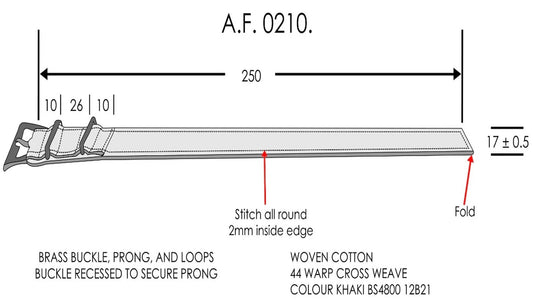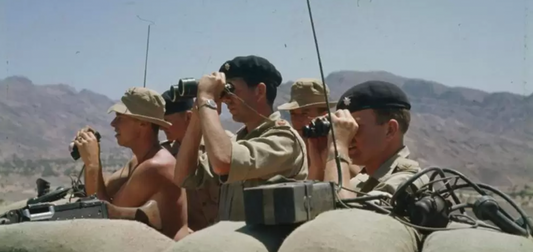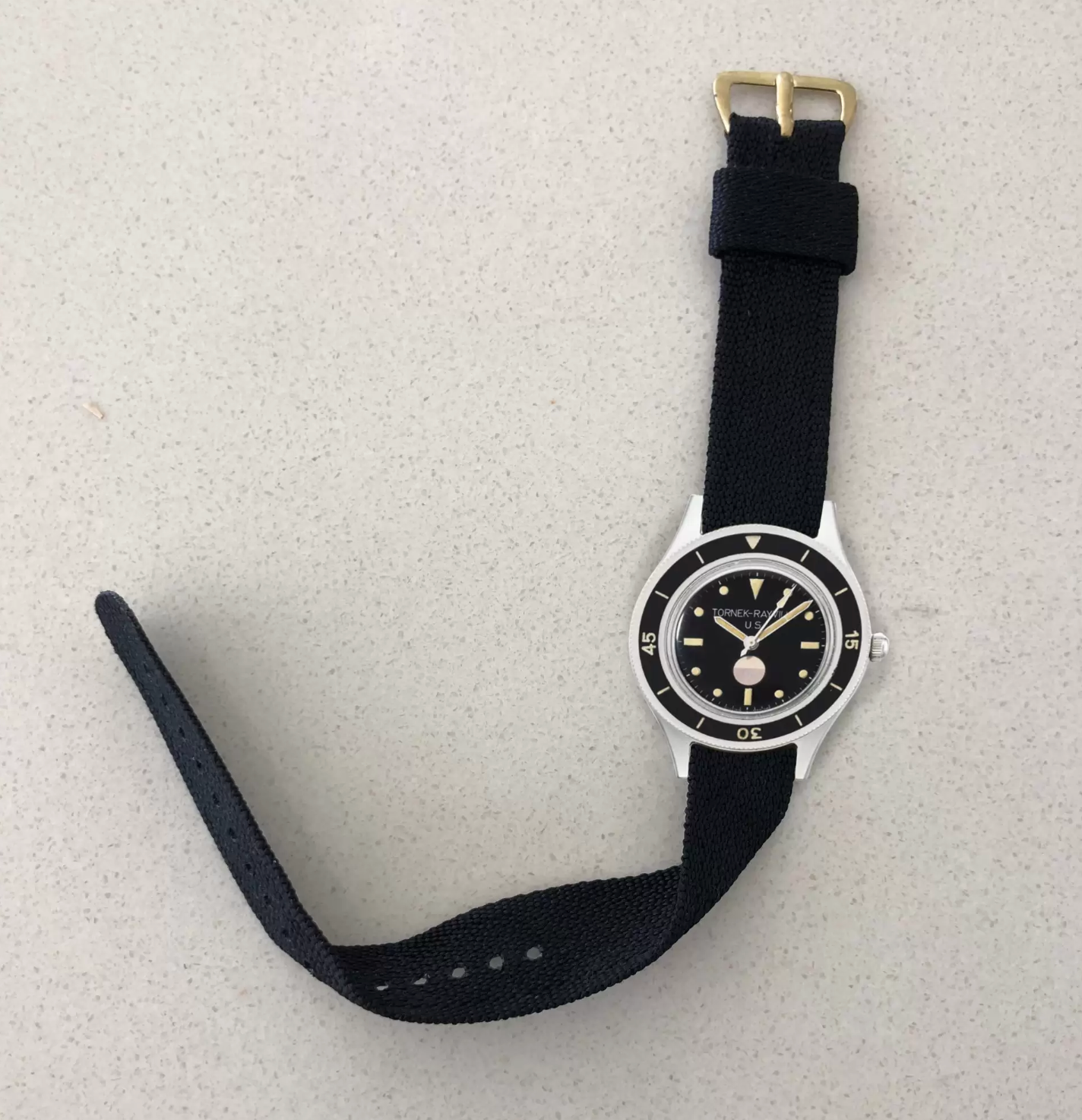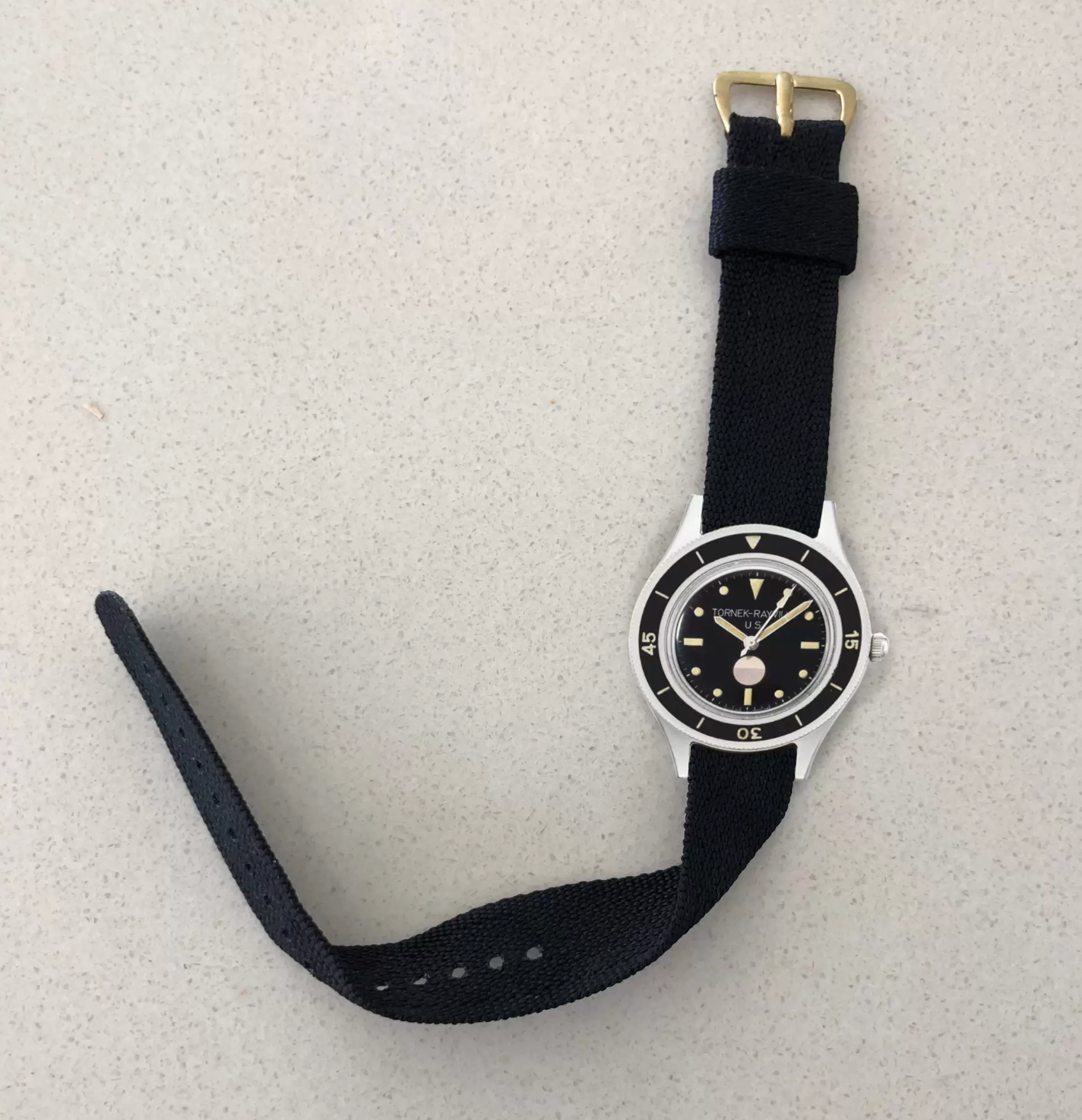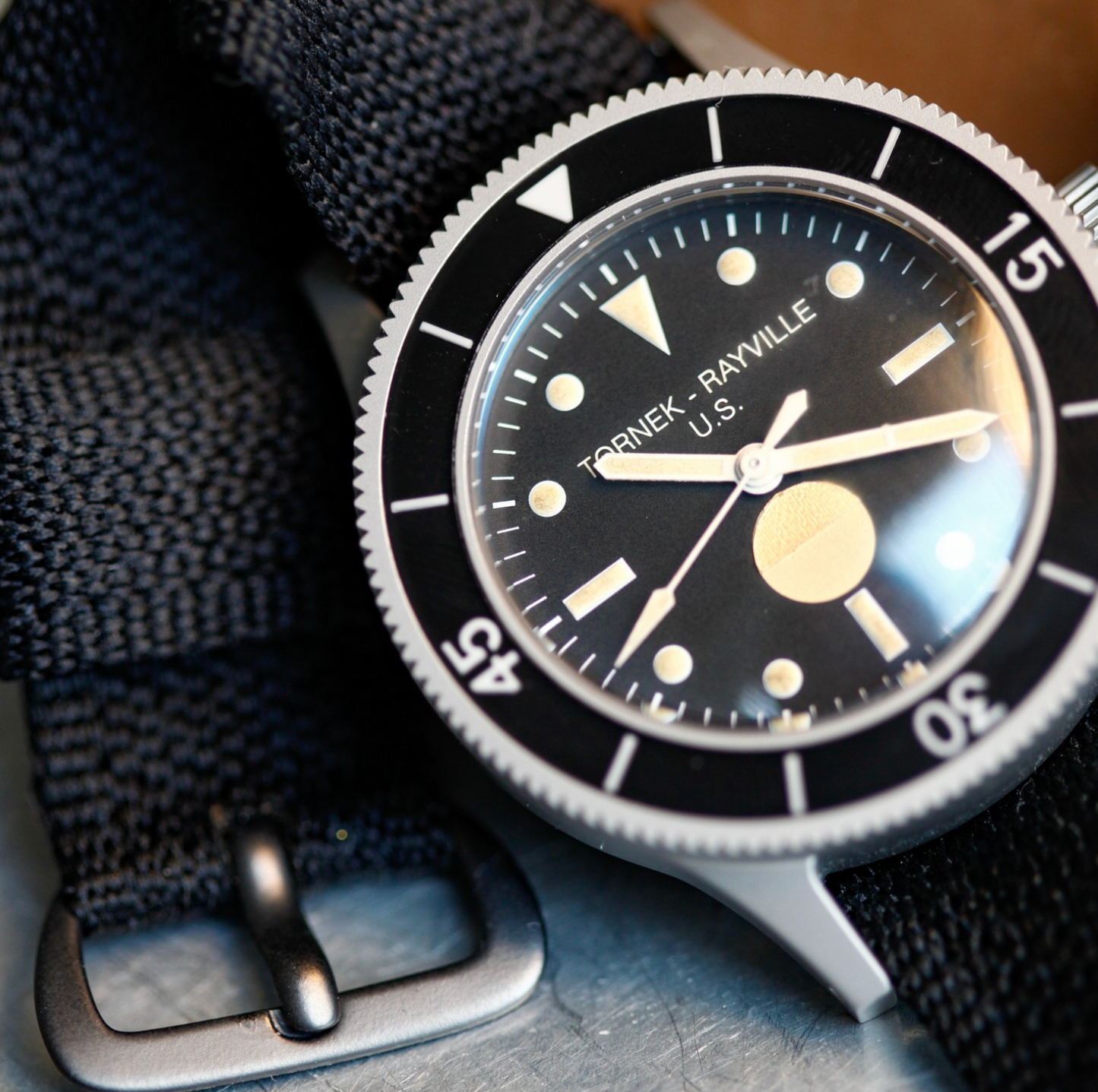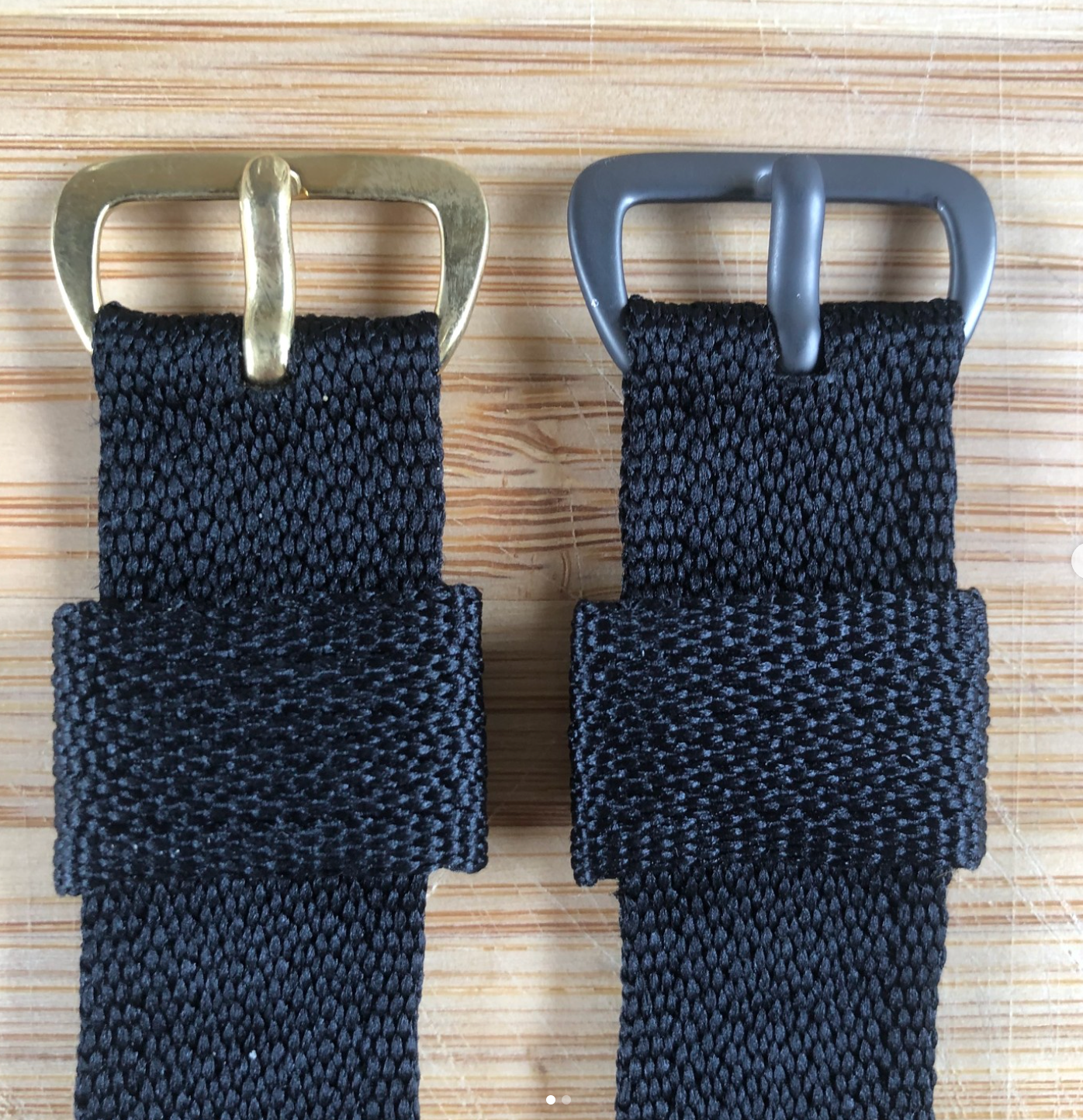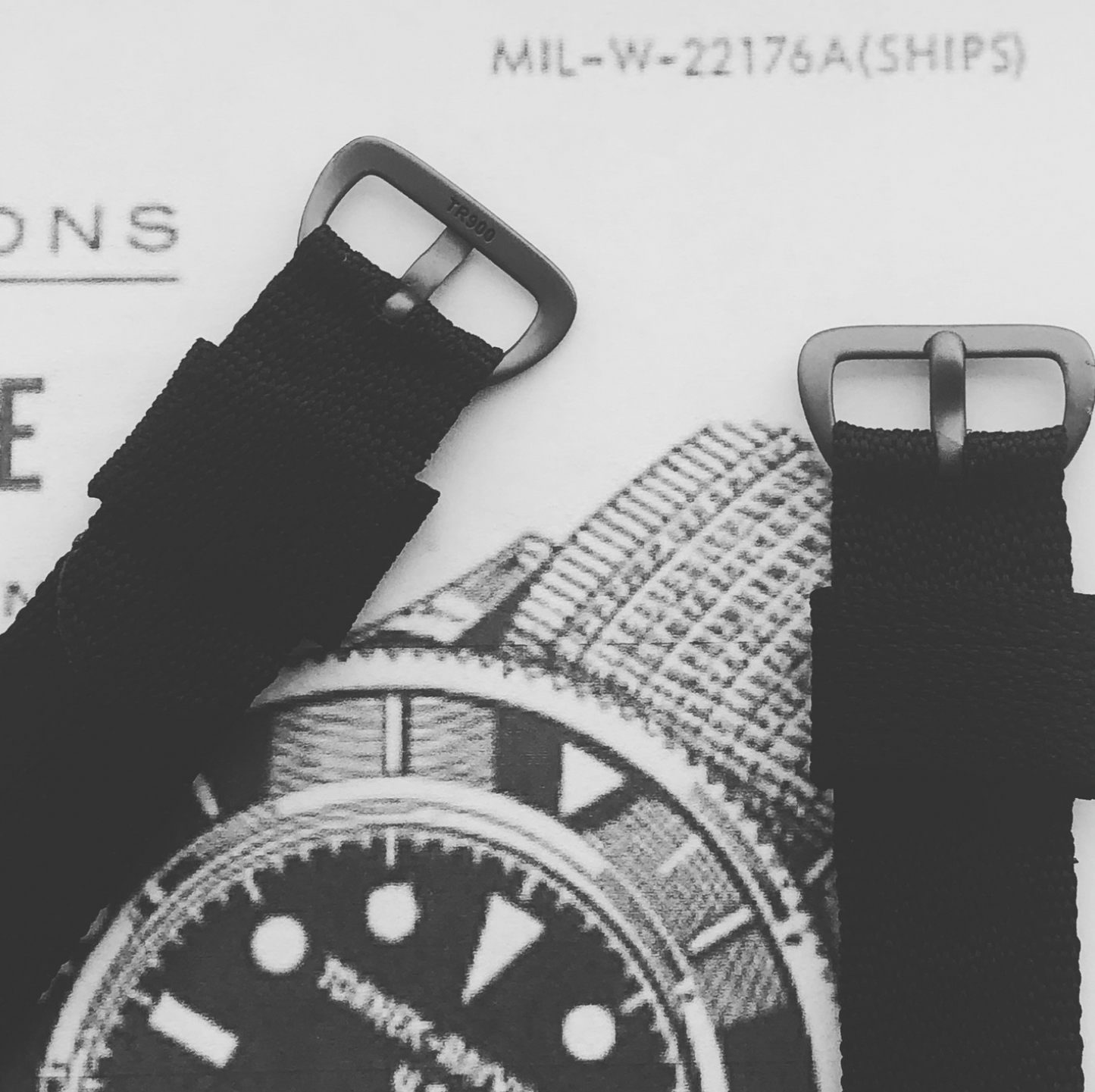After WW2, having used the USAF A-11 watch in the RAF 6B/234 designation, the Air Ministry decided to modify the A-11, and issued the 6B/346 watch specification in late 1946 or early 1947. At that stage the Air Ministry was independent from the War Office (the Army), and procured its own equipment with stores reference numbers commencing 6B/xxxx. (The Vocabulary of Royal Airforce Equipment, AP1086, Book 7, Section 6B lists all Aircraft Navigation Equipment and Accessories).
The specification called for a watch which was very similar to the A-11. The main difference was that chronometer-grade performance was specified, along with anti-magnetic properties. (Type A-11 wristwatches were manufactured in accordance with military specification 94-27834, published in 1940).
The resulting watch, the 6B/346 Mk 11 “Navigator’s”, was produced by two companies, Jaeger-LeCoultre (JLC) and International Watch Company (IWC), and was issued primarily to RAF and RAAF forces from 1948 to 1953.
Air Publication 1275A from June 1957 states : “The wrist watch Mk. 11 (Stores Ref 6B/346) is a highly accurate time-piece, suitable for astro navigation purposes.” The image shown from this publication is the IWC version on a Bonklip strap with 1/2″ (12.6mm) wide links.


This watch was to be used by the navigator in an RAF plane in conjunction with a bubble-sextant to calculate the exact latitude and longitude of the aircraft. In the 1950s and 60’s, the use of astro-navigation in aircraft was gradually phased out as radio navigation and ground plotting radars took over, now of course all made obsolete by modern GPS navigation.
The 6B/346 had fixed bars and originally came on a stainless steel Bonklip bracelet (6B/2763), which could have either 1/2″ or 5/8″ wide links.. The RAAF models had spring-bars and were coded G6B/346. The Bonklip strap could be closed at different positions which allowed it to be fixed at variable lengths, over or under a flying suit. The 6B/2763 Bonklip strap had 17.3mm open end pieces which were closed over the watch spring-bars.
British Army general service watches in the late war, and immediately post war, used webbing straps, either the A.F.0210. strap, or straps transitioning to a thicker single thickness strap 5/8″ wide. These also had a variable adjustment in that no eyelet holes were prepositioned in the strap, and the sharp buckle tongue could be placed anywhere.
After WW2 there was a need to standardise military equipment after the proliferation during WW2.
From November 1948, there were 20 meetings of a Working Party, formed under the Engineering Standards Coordinating Committee (ESCC) Technical Panel to develop a common manufacturing specification for a General Service (GS) wristwatch suitable for adoption by the three Services, the Army, the RAF, and the Navy.
Eventually, a “provisional” Defence Specification No. 3 (DEF-3), General Specification for Wrist Watch, General Service, was published on 1 September 1951.
While the W.W.W. specification was used as a template, key clauses were also borrowed from the navigators Mk. 11 wristwatch specification. In a sense, a watch manufactured to DEF-3 requirements was a fusion of design incorporating elements of both the W.W.W. and Mk. 11 wristwatches.
These discussions also influenced the use of the Bonklip strap by the Air Ministry. The merits of webbing and synthetic straps compared with leather and metal Bonklip bracelets (used on RAF wristwatches such as the navigators Mk. 11) were debated at length. The Navy was not convinced of the merits of the Bonklip bracelet. A webbing strap was considered appropriate for the DEF-3 specification. This was based on the Army’s development of the A.F.0210. wristwatch strap post war by the Narrow Fabrics Panel of the Textiles Sub Committee of the Joint Non Warlike Standardization Committee which became khaki in colour, 5/8” wide and “tropicalised” for jungle warfare use. In terms of the buckle and fittings, it was decided stainless steel would be specified rather than brass. Drawing No. 377-5 of 1 September 1951 depicting the DEF-3 strap was based on the Army strap, although the A.F.0210. strap remained available in stores for about another 30 years.



Image courtesy MWR forum member : hq_sandman_ute
Straps produced to this DEF-3 standard had 1/16″ stainless wire buckles, and stainless loops, and were given stores reference number 6B/2594, listed as Strap, Wrist, Watch, G.S. It has no preformed holes for the buckle tongue, just as for the earlier A.F.0210. strap.



Image courtesy MWR forum member : hq_sandman_ute
The Omega 6B/542 (Omega model CK2777-1) purchased by the Air Ministry for the RAF in 1953 was built to the DEF-3 specification. It uses the Omega 283 caliber. About 5900 pieces were ordered. It had 18mm lug width.
As can be seen above, the 6B/2594 strap is too narrow for the watch lug width, and the 6B/542 slid easily off the strap, and could be easily damaged. A RAF training movie on the pilot’s life at Cranwell showed a pull through leather strap fitted to the thin arrow Omega 6B/542 to prevent damage.


In the military expeditions to the Middle East the A.F.0210. strap was modified to retain the watch, shown with a fat arrow Omega 6B/542.


This also led to modification of the 6B/2594 strap, and keeper loops were fitted. This strap was issued as the 6B/1242987. However, most Omega 6B/542 watches reverted to using 6B/2763 Bonklip straps.

This strap is drawn, perhaps later, in Def Stan 66-4 (Part2) Issue 1 of April 11 1969, Watches Chronograph, wrist.



Photo courtesy MWR forum member geo7863



The 6B/2594 strap had another drawback, it was a tighter weave than the A.F.0210. strap and the buckle tongue could not penetrate easily, and caused damage to the strap as shown above. This experience led to the Air Ministry developing, and eventually specifying, a nylon strap with preformed holes and a keeper loop – the 6B/2617 strap.
The 6B/346 (or Mk 11/Mark XI) navigators watch became the first military watch to be issued with a synthetic fabric strap with keeper. In 1954 the 6B/2617 strap was issued to be worn with the watch, which up till then had been issued with a Bonklip strap attached.


Above is a JLC 6B/346 on a 6B/2763 Bonklip strap (16mm wide links), and an IWC 6B/346 on an original 6B/2617 strap. The 6B/2617 strap is a grey nylon strap, 5/8″ wide, with 8 longitudinal ribs. It was a 2 part strap with a keeper to retain the watch. It had welded seams and stainless steel hardware.

An original 6B/2617 pre NATO strap, and the 6B/2763 Bonklip strap with 16mm wide links are shown above. The Bonklip strap fitted onto the fixed bars of the 6B/346 watch, and hence appears shorter.
The Vocabulary of Royal Airforce Equipment, AP1086, Book 7, Section 6B lists:
346 Mark 11
Spares :–
2617 Strap, Wrist, Nylon
2763 Bracelet, Bonklip 17.5mm width of clip. To be fitted only by The Royal Greenwich Observatory.
This means that The Royal Greenwich Observatory was the only stores location for this spare part. And, they had the necessary tools to adjust the clip dimension.



Photo credit : gary.stephen.pusey
The 6B/346, above, is probably the most iconic British Military watch there is, and was produced in relatively small numbers by IWC and JLC. IWC supplied about 8,000 watches, but JLC supplied only 2,900 pieces making this one of the rarest of military watches. JLC also created a special movement, the calibre 488 SBR that was reserved exclusively for this model.
This was really the pinnacle of manually wound ‘tool’ watches, and is widely regarded as having the highest quality movement ever supplied to the military.
The 6B/346 was designed to withstand the harsh environment of a military airplane – it was constructed in such a way as to shield the mechanism from the strong magnetic fields which were present: the dial is made of iron and considerably thicker than that found on a regular watch, an iron dust cover wraps around the back of the movement and joins with the dial to completely enclose the movement and so prevent the influence of magnetism on the time keeping.
The Mark 11 watches were considered such valuable military property that the case and dial and even the movement itself was marked with the military pheon. The watches were subject to an exacting maintenance schedule, indeed initially they were returned to the manufacturer annually for service and for testing to to ensure they conformed to the original time keeping specification. No other military watch was ever subjected to such a rigorous testing and maintenance schedule.
The RAAF watches were issued with removable spring bars. In 1951 about 2000 replacement watch straps meeting US Military Specification, Strap, Wrist Watch, Nylon, MIL-S-3035 (dated 8 September 1949) were imported for the RAAF. Drawing B7646909 specified the one-piece moulded strap, shown below. With this type of strap, if one spring bar was lost, the watch would still remain on the wrist.

The 6B/346 (or Mark 11/Mark XI) navigators watch was the first military watch to use a synthetic fabric strap with keeper, a development from earlier webbing straps. In 1954 the 6B/2617 strap was issued to be worn with the watch. So the first pre-NATO nylon strap existed in 1954.⠀


We have sourced a 6B/2617 strap, as seen on the cover of the 1958 service manual on a Smiths DeLuxe GS Cal 0434E or 27CS. We are now producing and selling these straps as seen in the photo above.


Our 6B/2617 1954 nylon NATO is shown below on an 18mm lug width IWC 6B/346.


And, our 6B/2617 1954 nylon NATO is shown below on an 17mm lug width JLC 6B/346.


We are also producing 18mm wide and 20mm wide versions of this unique 8 rib strap.
Below, are the 16mm wide, 18mmm wide and 20mm wide 6B/2617 straps.





